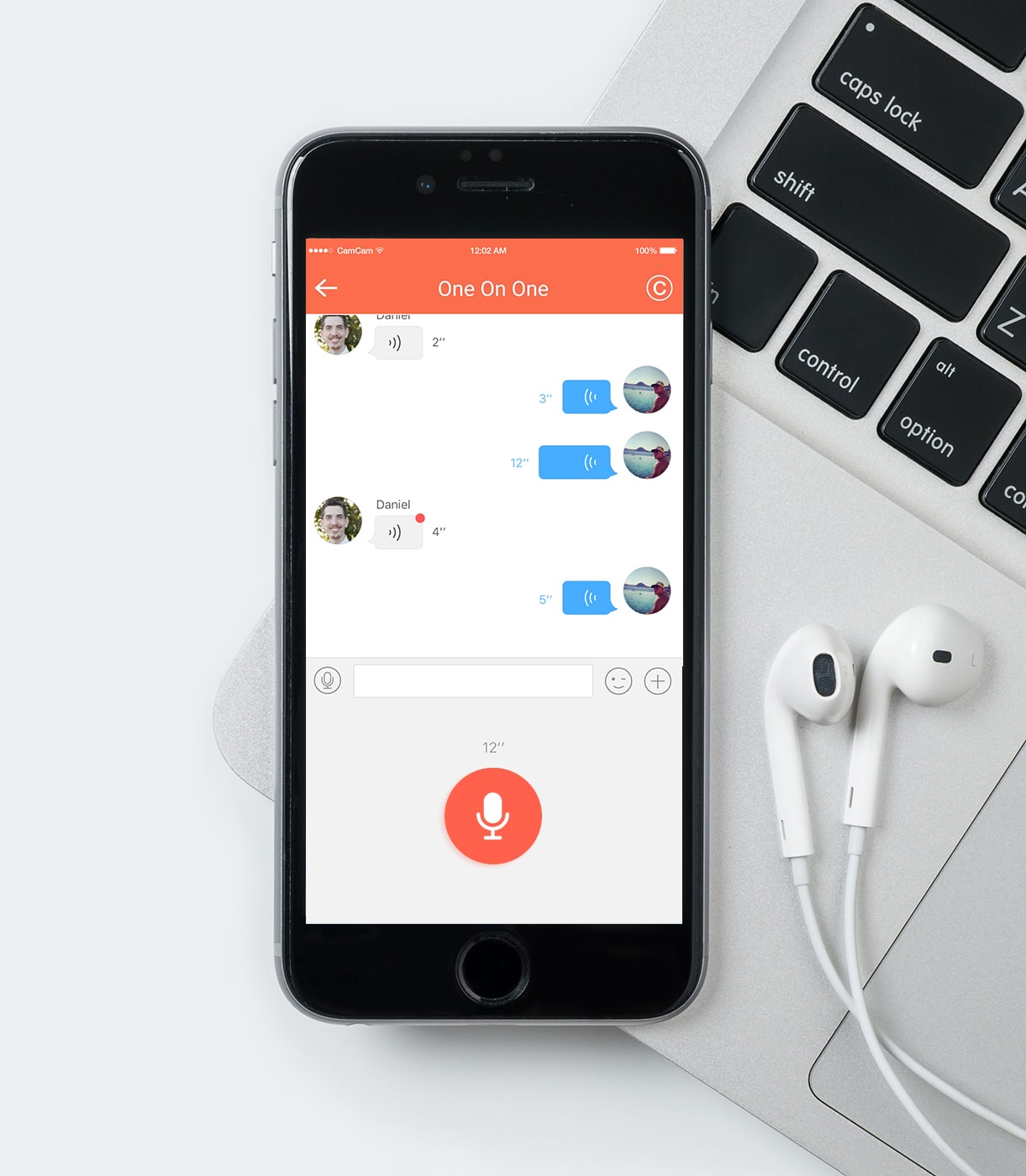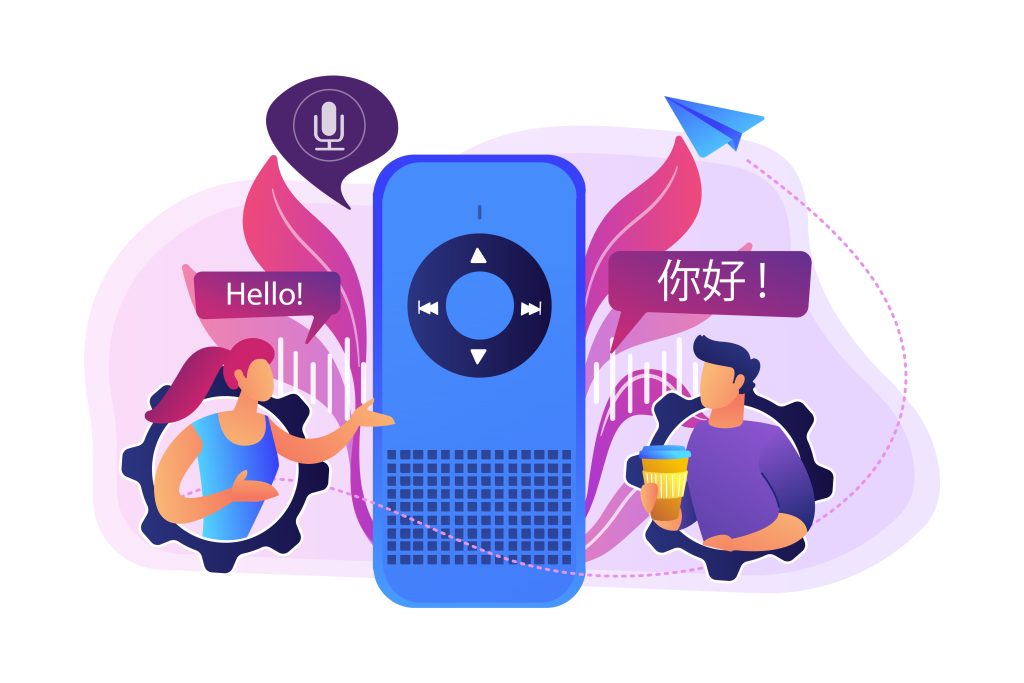AUDIO TRANSLATION
-
Audio Translation and Transcription Service
- In our globalized world, the demand for audio translation and transcription services is on the rise. These services play a pivotal role in bridging language barriers and making audio content accessible to a wider audience. From podcasts and webinars to interviews and conference recordings, audio translation and transcription services enable effective communication and ensure that valuable content reaches individuals across different linguistic backgrounds. In this article, we explore the importance of audio translation and transcription, their benefits, and how they unlock multilingual content.Language Accessibility:
Audio translation and transcription services make content accessible to individuals who do not understand the original language. By translating audio content into different languages, a broader audience can engage with the material and benefit from the information presented. Whether it’s educational content, news broadcasts, or corporate communications, audio translation breaks down language barriers and promotes inclusivity.Multilingual Content Distribution:
In an increasingly interconnected world, businesses and content creators strive to reach a global audience. Audio translation and transcription services enable the distribution of content in multiple languages, allowing organizations to connect with individuals from different cultural and linguistic backgrounds. This expands their reach, enhances their brand visibility, and fosters engagement with a diverse audience.Real-Time Interpretation:
Audio translation services provide real-time interpretation during live events, conferences, webinars, or broadcasts. Skilled interpreters listen to the audio in the source language and simultaneously provide the translated version in the target language. This real-time interpretation ensures that participants can follow the discussions and presentations in their preferred language, regardless of the language in which the event is conducted.Cultural Adaptation:
Audio translation goes beyond converting words from one language to another. It involves cultural adaptation to ensure that the translated content is contextually appropriate and resonates with the target audience. Translators consider cultural nuances, idiomatic expressions, and local references, delivering a translation that captures the intended meaning and maintains the authenticity of the content.Transcription for Accessibility:
Transcription services convert audio content into written text. This is particularly valuable for individuals who are deaf or hard of hearing, allowing them to access audio content through text-based formats. Transcriptions also benefit non-native speakers who may find it easier to comprehend written text rather than spoken language. By providing transcriptions, organizations ensure that their content is accessible to a wider range of individuals.Search Engine Optimization (SEO):
Transcribed audio content can significantly improve search engine visibility. Search engines crawl and index text-based content, making transcriptions a valuable asset for optimizing content for search engine rankings. By including transcriptions alongside audio content, businesses and content creators enhance their online discoverability and attract a larger audience.Enhanced Learning and Comprehension:
Audio translation and transcription services benefit educational institutions, e-learning platforms, and training organizations. Translated audio content enables students and learners to access educational materials in their native language, facilitating better understanding and comprehension. Transcriptions provide a written reference for reviewing and studying the audio content, aiding in information retention.Audio translation and transcription services play a crucial role in breaking down language barriers and unlocking multilingual content. By providing translations and transcriptions, organizations and content creators make their audio content accessible to a global audience, expanding their reach and fostering inclusivity. Audio translation services enable real-time interpretation during live events, while transcriptions enhance accessibility, search engine optimization, and learning experiences. Through audio translation and transcription, individuals from different linguistic backgrounds can engage with valuable content, fostering cross-cultural understanding and knowledge exchange in our interconnected world.
-
Audio Translation as a Marketing furthermore, Business Translation Tool
- In today’s global marketplace, businesses are constantly seeking effective ways to expand their reach and connect with a diverse audience. Audio translation has emerged as a powerful marketing and business tool that helps companies communicate their message to international markets. By translating audio content into different languages, businesses can engage with new customers, build brand awareness, and foster strong relationships across borders. In this article, we explore the benefits and strategies of using audio translation as a marketing and business tool.Accessing Global Markets:
Expanding into international markets requires businesses to break through language barriers. Audio translation allows companies to communicate with customers in their native language, creating a personalized and relatable experience. By translating audio content, businesses can effectively target and engage customers from different countries, increasing their chances of success in global markets.Reaching a Wider Audience:
Audio translation broadens the reach of marketing messages. By making audio content available in multiple languages, businesses can connect with a diverse range of consumers who prefer to consume content in their native language. This inclusivity enables businesses to tap into new markets, attract a wider audience, and drive customer engagement.Enhancing User Experience:
Providing audio content in different languages enhances the user experience and improves customer satisfaction. By offering translated audio, businesses show their commitment to meeting the needs of their international audience. Customers appreciate content that is easily accessible and relevant to their cultural context, fostering a positive perception of the brand and increasing the likelihood of customer loyalty.Building Brand Awareness:
Audio translation helps businesses build brand awareness on a global scale. By localizing audio content, companies can tailor their marketing messages to resonate with specific target markets. This customization creates a connection with local consumers, generating brand recognition and loyalty. A strong brand presence in multiple languages builds trust and credibility, positioning the business as a reliable choice in the international market.Leveraging Multilingual SEO:
Audio translation plays a critical role in search engine optimization (SEO) strategies. By translating audio content and providing accurate transcriptions, businesses enhance their online visibility and attract organic traffic from international search engines. Multilingual SEO allows businesses to rank higher in localized search results, increasing their chances of being discovered by potential customers in different regions.Adapting Cultural Nuances:
Successful audio translation goes beyond word-for-word conversion; it adapts cultural nuances and idiomatic expressions to ensure the message resonates with the target audience. By understanding the cultural context, translators can localize audio content, making it more relatable and engaging for listeners. This cultural adaptation demonstrates respect for the local culture and fosters stronger connections with customers.Engaging in Effective Communication:
Audio translation allows businesses to effectively communicate their message and convey their brand values. By presenting information in the listener’s native language, businesses can overcome language barriers and ensure that their message is accurately understood. Clear communication builds trust and facilitates business transactions, ultimately contributing to the growth and success of the company.Audio translation is a valuable marketing and business tool that enables companies to expand their global reach, build brand awareness, and engage with a diverse audience. By translating audio content into different languages, businesses can connect with customers on a personal level, adapt to cultural nuances, and communicate their brand values effectively. Leveraging audio translation as part of marketing strategies enhances user experience, improves search engine visibility, and fosters stronger relationships with customers worldwide. As businesses continue to navigate the global marketplace, audio translation remains a powerful tool for expanding their international presence and driving business growth.

“It was my first, an ideal opportunity to purchase the record administration on 24x7offshoring.com. Experiencing met difficulty with the document transferring, I connected with the client care.
Everything worked out in a good way aside from the last installment, on which I was informed that the group would stand by me until the constraints on my PayPal account were lifted. Recently, I sorted it out, lastly paid effectively. Honestly, the record I got is worth of learning.
A debt of gratitude is in order for the polished methodology of my typographer and the tolerance of the client care.”
Linbo Li
Audio interpretation can incorporate a lot of interpretation tasks, necessities and prerequisites. Some sound interpretation is a basic voice over interpretation for something like e-learning materials, or a book recording interpretation and recording.
Different sorts incorporate sound record interpretation; when the source language is sound recorded, and the last conveyance is a composed report interpretation, translated from the sound account.
For instance, here and their customers will demand Greek to English interpreted interpretation. For this situation, the last conveyed interpretation would be a Greek report interpretation of sound chronicle.
Sound Translation for Voice-Overs, E-learning,
In the digital age, multimedia content has become a prevalent form of communication across various platforms. Sound translation, also known as voice-over translation, plays a crucial role in making multimedia content accessible and engaging for a global audience. Whether it’s e-learning modules, videos, presentations, or audio guides, sound translation ensures that the message is effectively conveyed in different languages. In this article, we delve into the significance of sound translation in voice-overs, e-learning, and multimedia content, exploring its benefits and applications.
Multilingual Voice-Overs:
Voice-overs are a common technique used to provide spoken narration or dialogue in multimedia content. Sound translation allows voice-overs to be delivered in multiple languages, making the content accessible and comprehensible to diverse audiences. Whether it’s dubbing a movie, translating video tutorials, or narrating corporate training materials, multilingual voice-overs enhance the user experience and cater to different language preferences.
E-Learning Modules:
E-learning has gained significant traction as an effective educational platform. Sound translation is crucial for e-learning modules as it enables learners from different linguistic backgrounds to access educational content. By translating the audio components of e-learning modules, such as lectures, presentations, and instructional videos, learners can fully understand and engage with the material, fostering effective learning outcomes.
Cultural Adaptation:
Sound translation goes beyond linguistic conversion; it also involves cultural adaptation. Skilled translators consider cultural nuances, idiomatic expressions, and local references to ensure that the translated voice-overs resonate with the target audience. Cultural adaptation enhances the authenticity and relatability of the content, making it more engaging and meaningful for the listeners.
Accessibility for the Hearing Impaired:
Sound translation also plays a crucial role in making multimedia content accessible for individuals who are deaf or hard of hearing. By providing translated subtitles or closed captions alongside the audio content, hearing-impaired individuals can follow the message and fully engage with the material. This inclusivity ensures that no one is left behind and allows for equal access to educational and informative content.
Improved Comprehension:
Sound translation enhances comprehension, especially for non-native speakers of the original language. By providing translated voice-overs, learners and viewers can follow the content more easily, grasp the key concepts, and fully understand the message being conveyed. Improved comprehension promotes effective learning, knowledge retention, and better engagement with the content.
Global Reach and Market Expansion:
Sound translation enables businesses to expand their reach and target new markets. By translating voice-overs and multimedia content, companies can effectively communicate with international audiences, connect with potential customers, and establish a global presence. This market expansion opens up new opportunities, boosts brand visibility, and facilitates cross-cultural communication.
Personalized Learning Experience:
Sound translation allows for a personalized learning experience by providing content in the learner’s preferred language. Learners can absorb information more effectively when it is presented in a language they are comfortable with. This personalized approach enhances engagement, motivation, and knowledge absorption, leading to better learning outcomes.
Sound translation plays a crucial role in enhancing voice-overs, e-learning modules, and multimedia content. By providing translated voice-overs, content creators ensure that their message reaches a global audience, promotes accessibility, and fosters cross-cultural understanding. Sound translation improves comprehension, facilitates personalized learning experiences, and expands market reach. As multimedia content continues to shape communication and education, sound translation remains an invaluable tool for making content inclusive, engaging, and impactful on a global scale.
Book recordings and the sky is the limit from there
In the world of literature, book recordings have emerged as a powerful medium for storytelling and knowledge sharing. With advancements in technology and the growing popularity of audiobooks, the reach and impact of literature have expanded beyond traditional print formats. In this article, we explore the significance of book recordings and their potential applications in various contexts.
Accessibility for All:
Book recordings provide an inclusive and accessible format for individuals with visual impairments or reading difficulties. By converting books into audio format, individuals who cannot access traditional print materials can now engage with literature. Audiobooks make it possible for everyone, regardless of their reading ability or visual acuity, to enjoy the beauty of storytelling and gain knowledge from literary works.
Enhanced Listening Experience:
Book recordings enhance the listening experience by bringing stories to life through professional narration. Skilled voice actors or authors themselves lend their voices to the characters, infusing emotions, accents, and personalities into the narrative. The immersive nature of audiobooks captivates listeners, creating a rich and engaging experience that complements the written word.
Multilingual Offerings:
Book recordings offer the opportunity to explore literature in different languages. By translating and narrating books in various languages, audiobooks enable individuals to experience stories and ideas from cultures around the world. Multilingual book recordings foster cross-cultural understanding, promote language learning, and expand literary horizons.
Convenience and Portability:
Book recordings provide a convenient and portable means of accessing literature. Listeners can enjoy books while engaging in other activities such as commuting, exercising, or doing household chores. The ability to carry an entire library of audiobooks on a smartphone or other portable devices allows for easy access to literature anytime and anywhere.
Educational Applications:
Book recordings have significant educational applications. They can be used in classrooms to enhance literacy skills, improve pronunciation, and introduce students to a wide range of literary genres. Audiobooks also support language learning by providing authentic spoken language models and helping learners develop listening comprehension skills.
Literary Performances and Interpretations:
Book recordings offer a unique platform for authors, poets, and performers to showcase their literary works. Some authors choose to narrate their own books, lending their personal touch and insight to the storytelling process. Additionally, audiobooks provide a medium for performances and interpretations of poetry, enhancing the artistic expression and impact of the written word.
Advancements in Technology:
Technological advancements have further expanded the possibilities of book recordings. Interactive audiobooks, for example, can include sound effects, music, and additional commentary to enrich the listening experience. Artificial intelligence and natural language processing technologies are also being utilized to create interactive and personalized audiobook experiences tailored to individual preferences.
Book recordings have revolutionized the way literature is consumed and appreciated. By providing accessibility, enhancing the listening experience, and offering multilingual options, audiobooks have opened up new avenues for storytelling, education, and cultural exchange. They offer convenience, portability, and a platform for literary performances. As technology continues to evolve, the future of book recordings holds even more potential for innovative and immersive experiences. Whether it’s for personal enjoyment, educational purposes, or literary performances, book recordings have truly expanded the reach of literature, making it accessible and engaging for audiences around the world.
Sound interpretation, regardless of whether sound record interpretation, voice over interpretation, or other sound interpretation materials, are significant for e-learning organizations, language learning programming and online language e-learning destinations, book recordings, programming with sound guidelines, and numerous other business and administration apparatuses.
At whatever point conceivable, kindly give a composed duplicate to go with the source language for our reference. This will assist us with offering the least interpretation cost conceivable.
A couple of instances of sound interpretations in some basic dialects are:

Audio translation from English to Spanish for programming sound guidance manuals, sound accounts for promoting and publicizing interpretation, and significantly more.
Book recording interpretation from French to English, Russian scholarly interpretation for book recordings, Spanish sound course reading interpretation, and different sorts of books.
The video can be deciphered either from its record, or straightforwardly from the video document. The interpretation will take the words expressed in the first video and convert them into the necessary language.
Audio to Audio translation – this is perhaps the most basic types of sound interpretations; requiring a straightforward spoken interpretation of the source language to the objective language. The last sound arrangement or record type for conveyance will fluctuate from one customer to another.
Site sound interpretation for e-learning sites, instructional and instructional exercise site content, site limitation with sound interpretation, and substantially more.
As of late, a customer required Arabic interpretation for sound recorded substance on his e-learning site.
While we underline that we can give any sort of expert record interpretation administration, we can likewise give sound language interpretation in almost any language, or under any circumstance.
With an organization of more than 5,000 interpretations with industry-explicit interpretation experience, we keep on being a worldwide driving interpretation organization.
AUDIO TRANSLATION

 Afrikaans
Afrikaans Albanian
Albanian Amharic
Amharic Arabic
Arabic Armenian
Armenian Azerbaijani
Azerbaijani Basque
Basque Belarusian
Belarusian Bengali
Bengali Bosnian
Bosnian Bulgarian
Bulgarian Catalan
Catalan Cebuano
Cebuano Chichewa
Chichewa Chinese (Simplified)
Chinese (Simplified) Chinese (Traditional)
Chinese (Traditional) Corsican
Corsican Croatian
Croatian Czech
Czech Danish
Danish Dutch
Dutch English
English Esperanto
Esperanto Estonian
Estonian Filipino
Filipino Finnish
Finnish French
French Frisian
Frisian Galician
Galician Georgian
Georgian German
German Greek
Greek Gujarati
Gujarati Haitian Creole
Haitian Creole Hausa
Hausa Hawaiian
Hawaiian Hebrew
Hebrew Hindi
Hindi Hmong
Hmong Hungarian
Hungarian Icelandic
Icelandic Igbo
Igbo Indonesian
Indonesian Irish
Irish Italian
Italian Japanese
Japanese Javanese
Javanese Kannada
Kannada Kazakh
Kazakh Khmer
Khmer Korean
Korean Kurdish (Kurmanji)
Kurdish (Kurmanji) Kyrgyz
Kyrgyz Lao
Lao Latin
Latin Latvian
Latvian Lithuanian
Lithuanian Luxembourgish
Luxembourgish Macedonian
Macedonian Malagasy
Malagasy Malay
Malay Malayalam
Malayalam Maltese
Maltese Maori
Maori Marathi
Marathi Mongolian
Mongolian Myanmar (Burmese)
Myanmar (Burmese) Nepali
Nepali Norwegian
Norwegian Pashto
Pashto Persian
Persian Portuguese
Portuguese Punjabi
Punjabi Romanian
Romanian Russian
Russian Polish
Polish Samoan
Samoan Scottish Gaelic
Scottish Gaelic Serbian
Serbian Sesotho
Sesotho Shona
Shona Sindhi
Sindhi Sinhala
Sinhala Slovak
Slovak Slovenian
Slovenian Somali
Somali Spanish
Spanish Sundanese
Sundanese Swahili
Swahili Swedish
Swedish Tamil
Tamil Tajik
Tajik Telugu
Telugu Turkish
Turkish Ukrainian
Ukrainian Urdu
Urdu Uzbek
Uzbek Thai
Thai Vietnamese
Vietnamese Welsh
Welsh Xhosa
Xhosa Yiddish
Yiddish Yoruba
Yoruba Zulu
Zulu